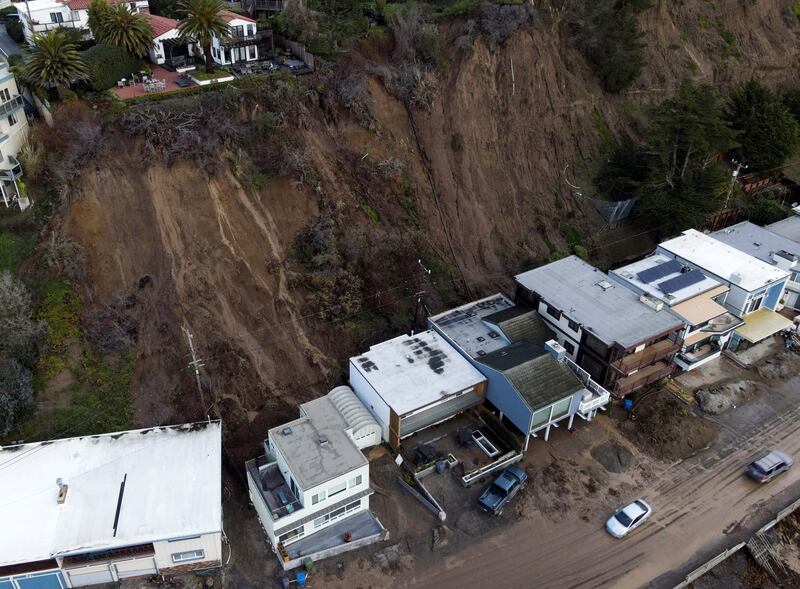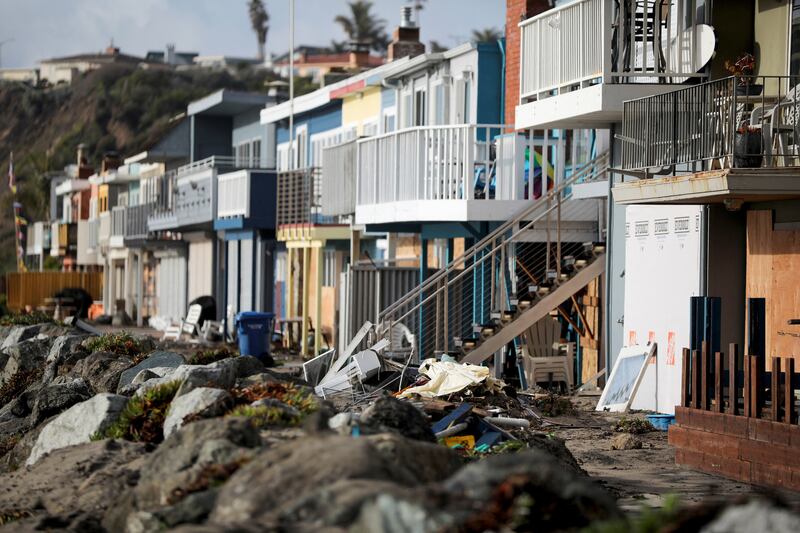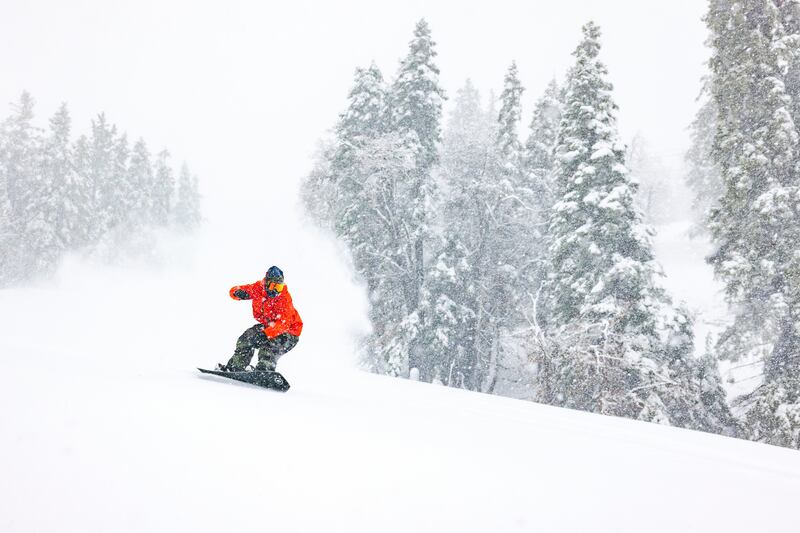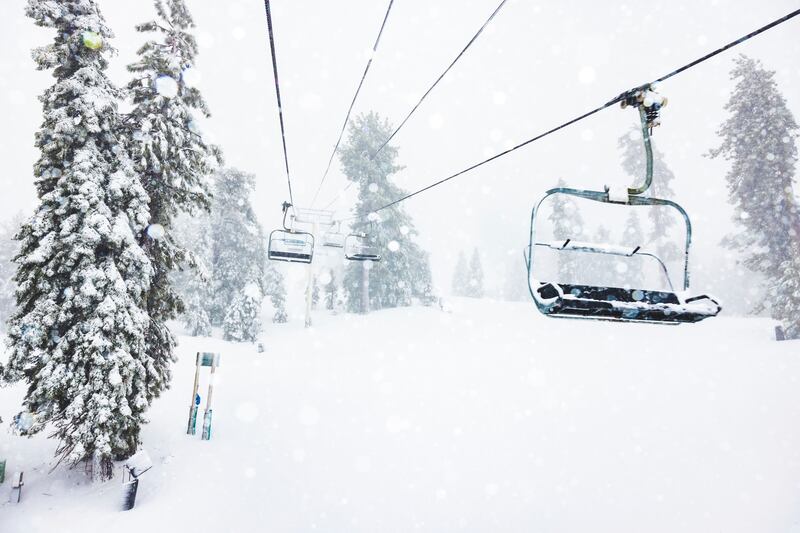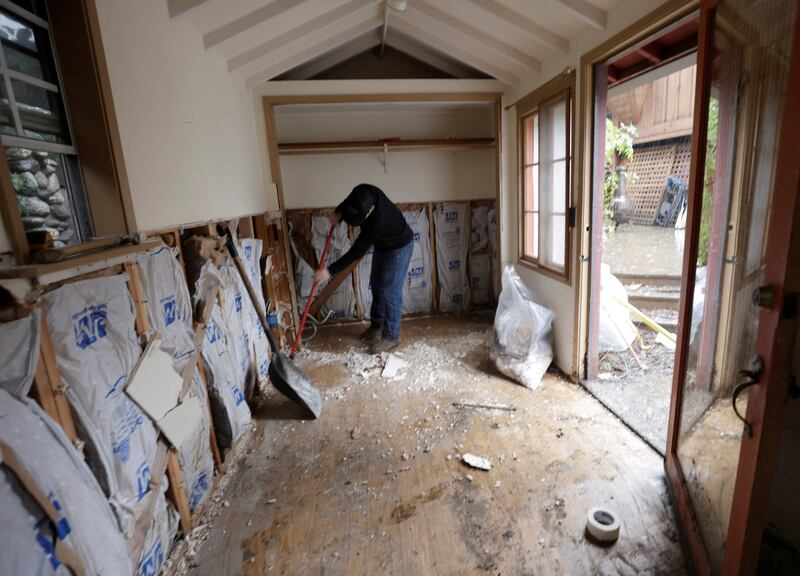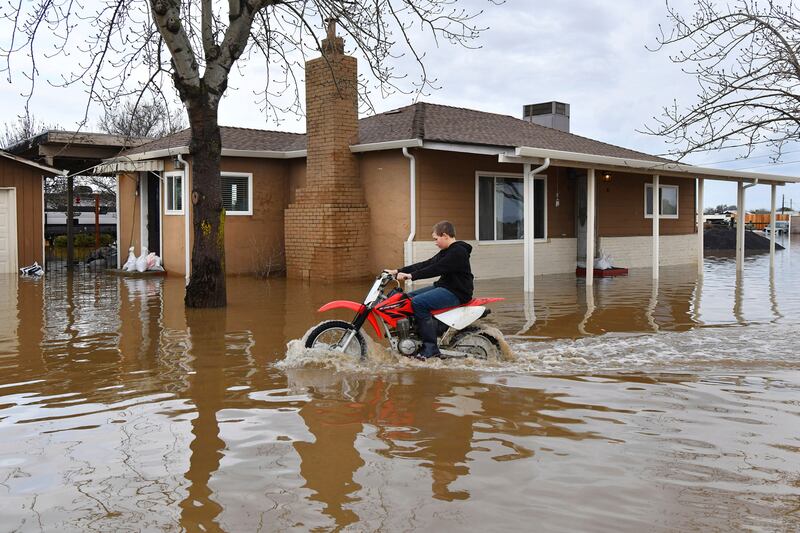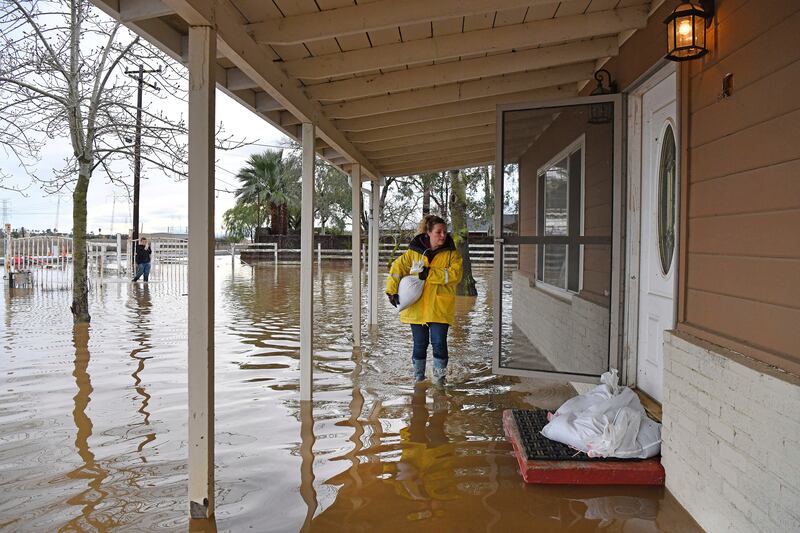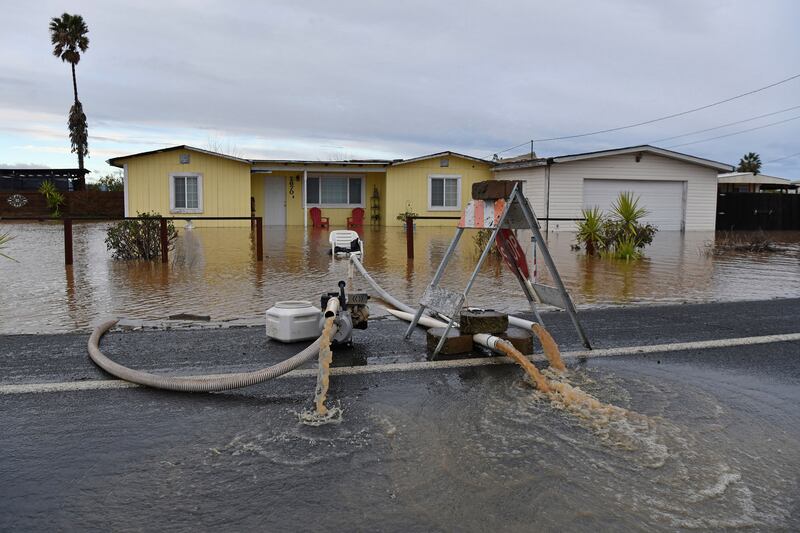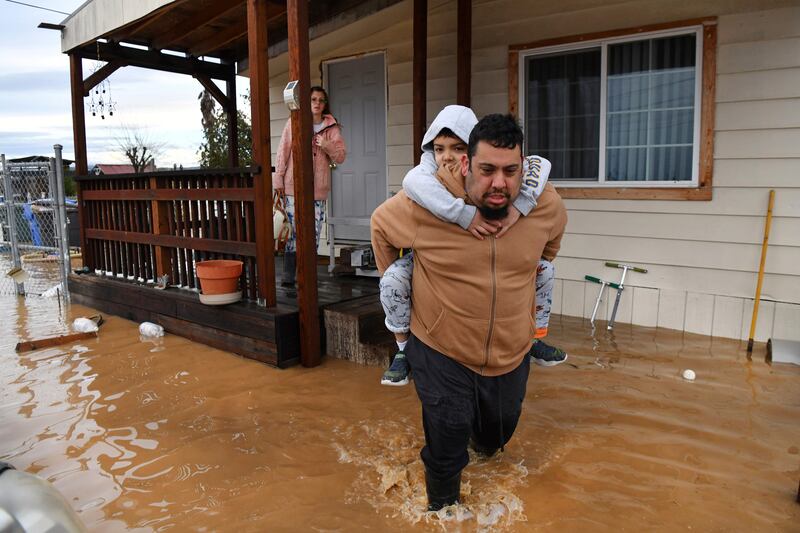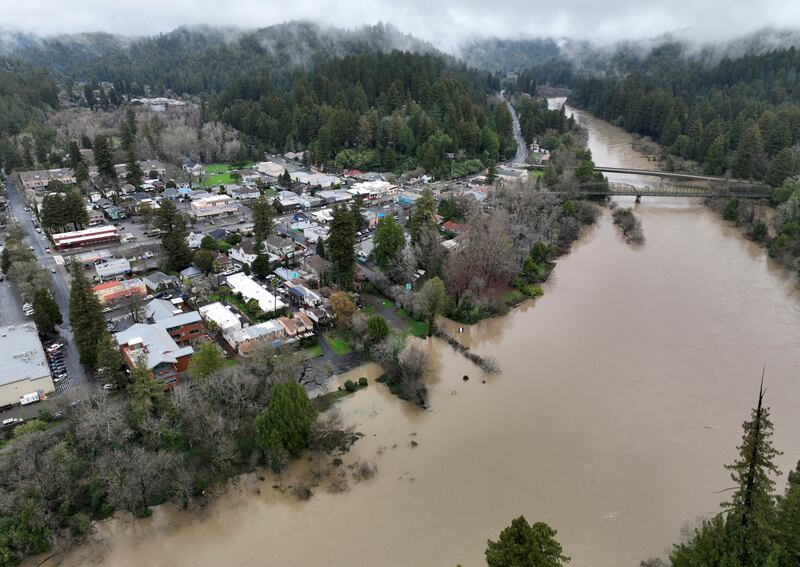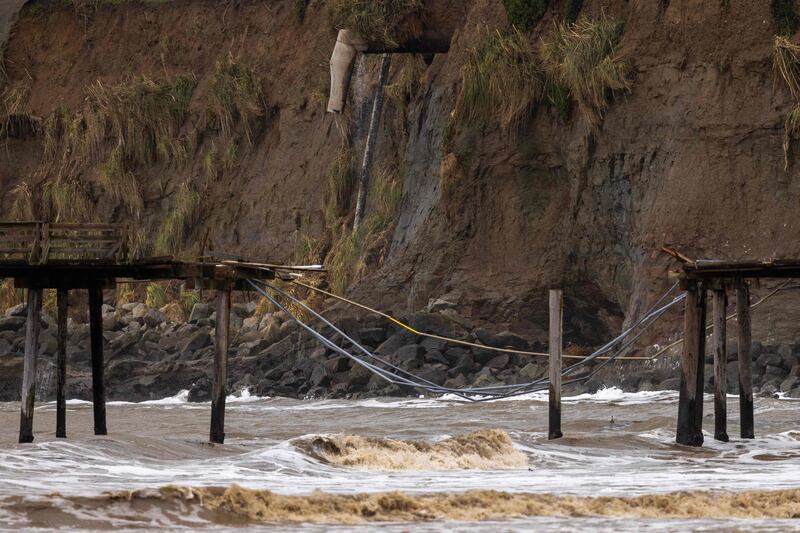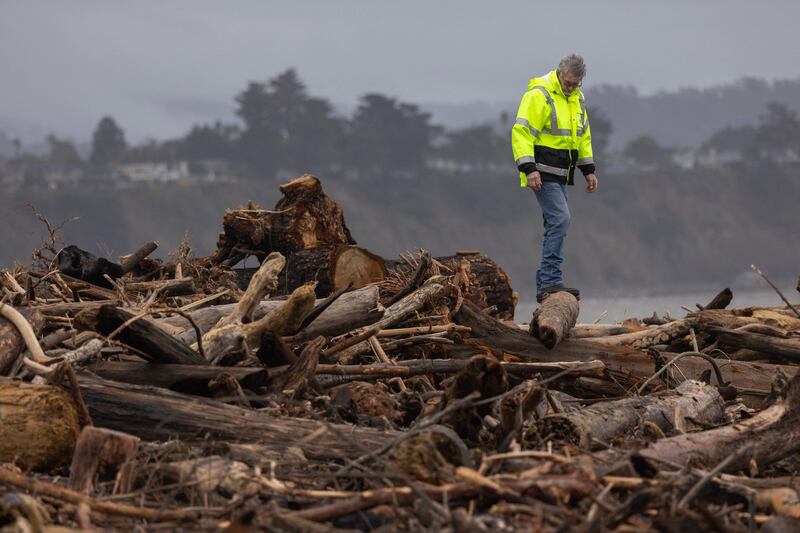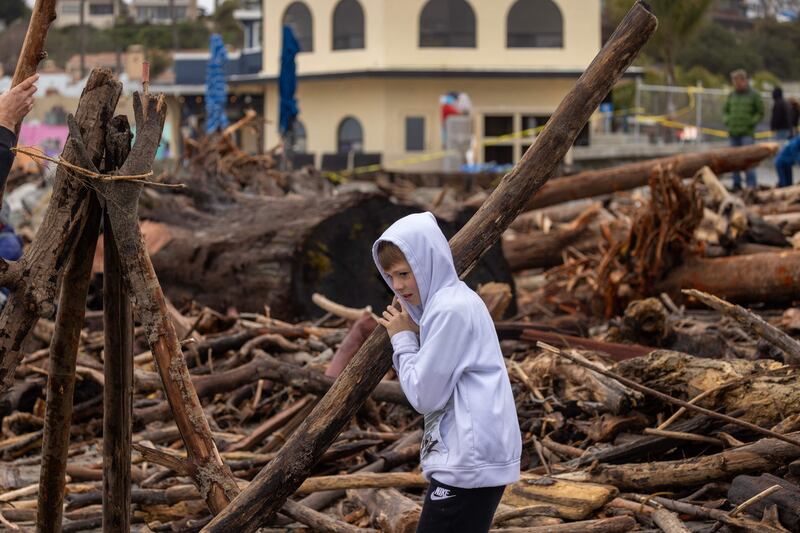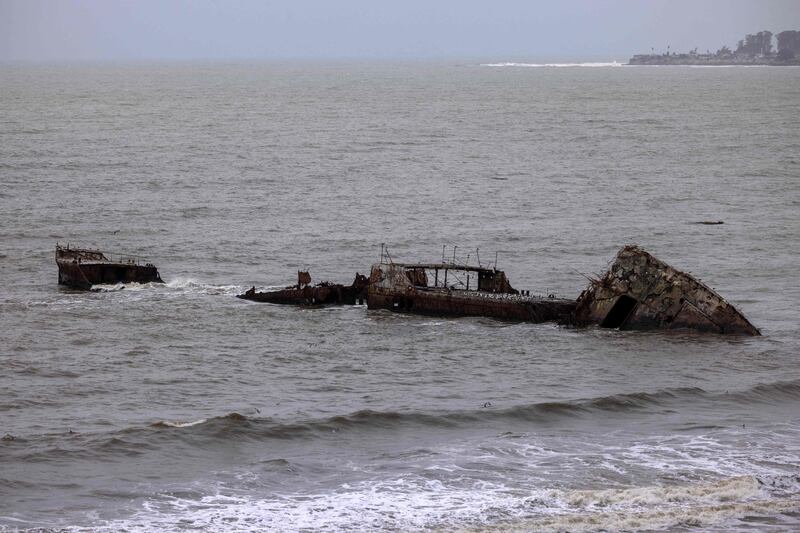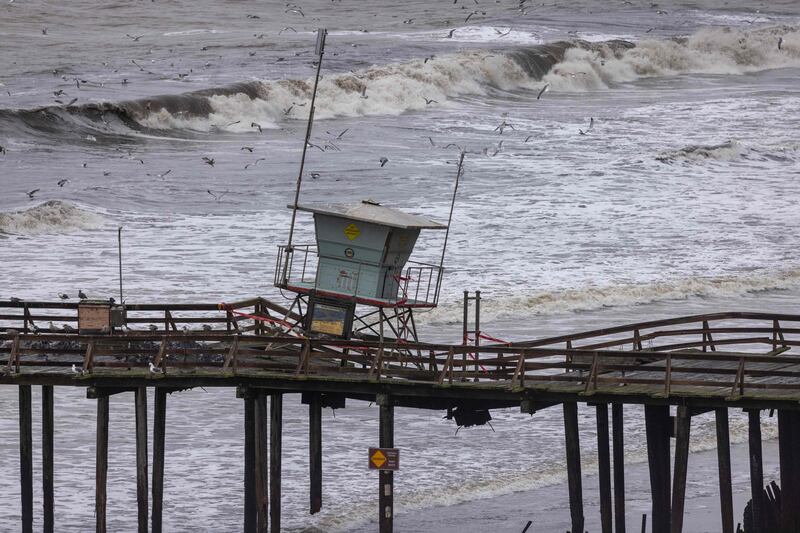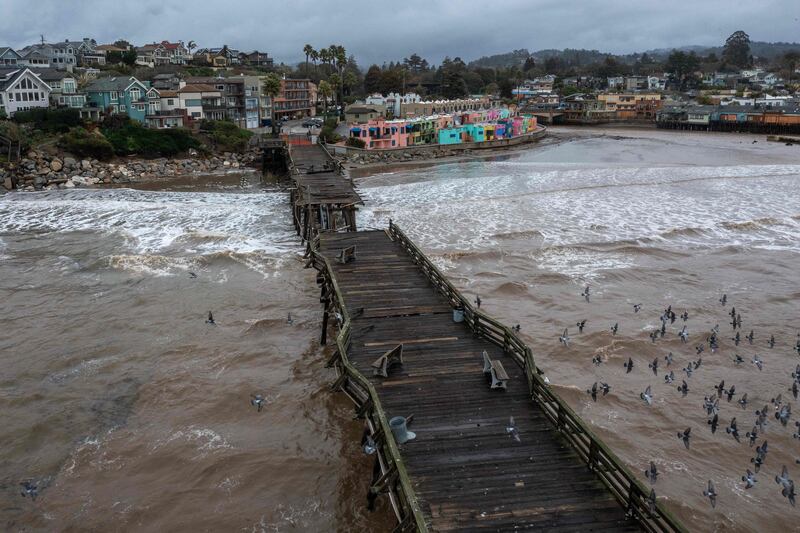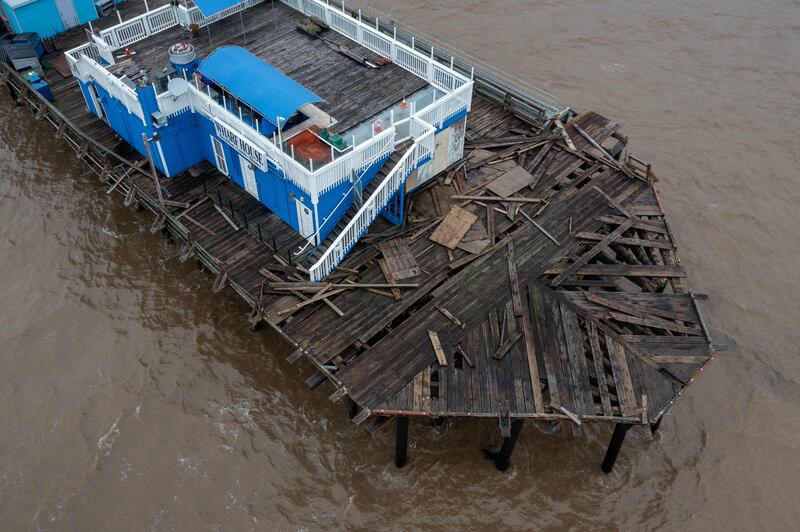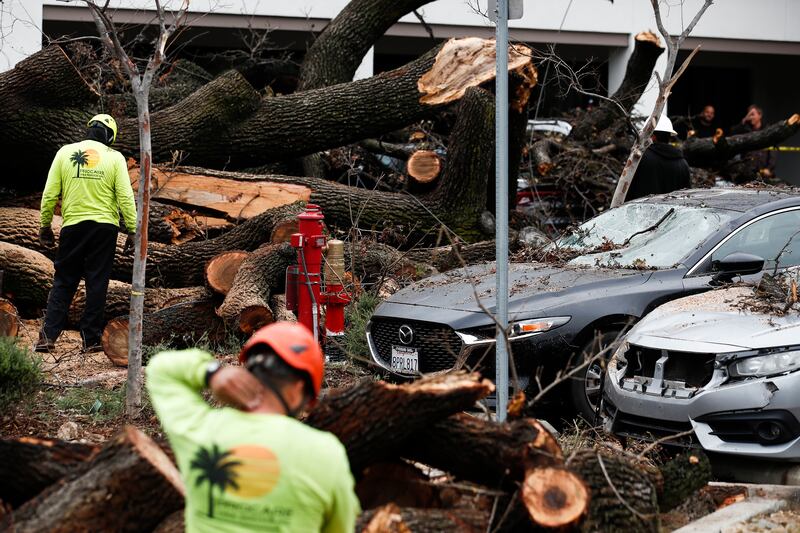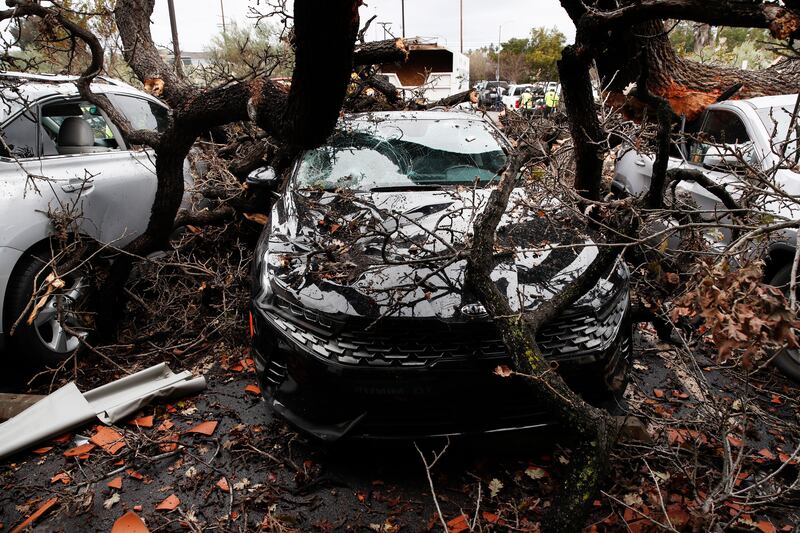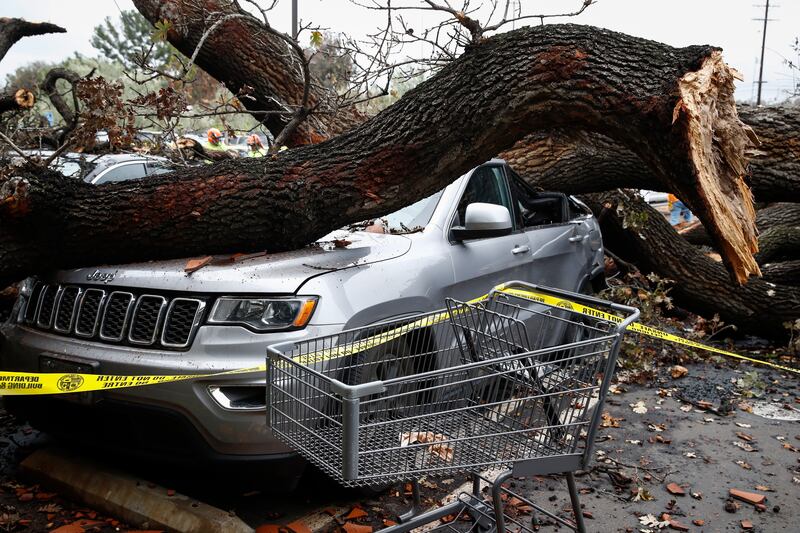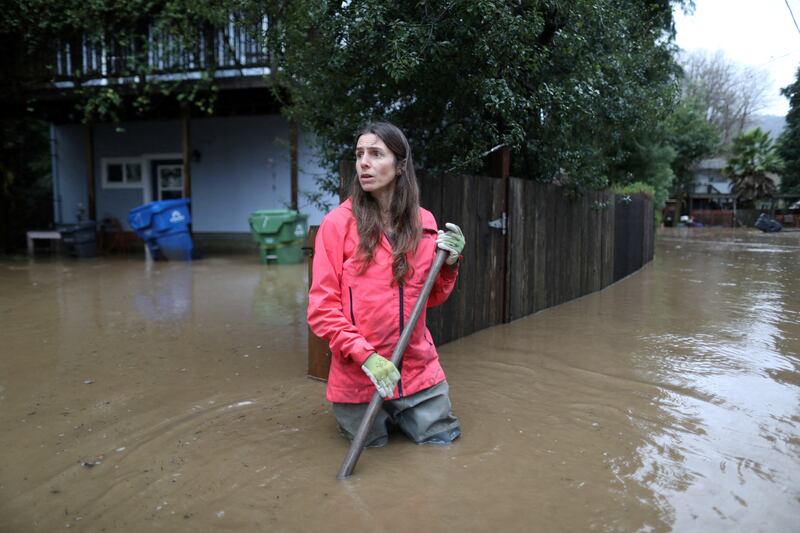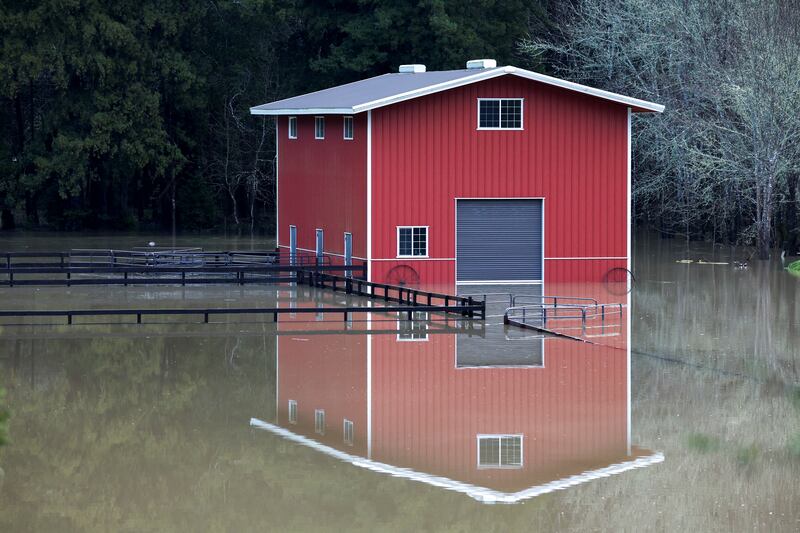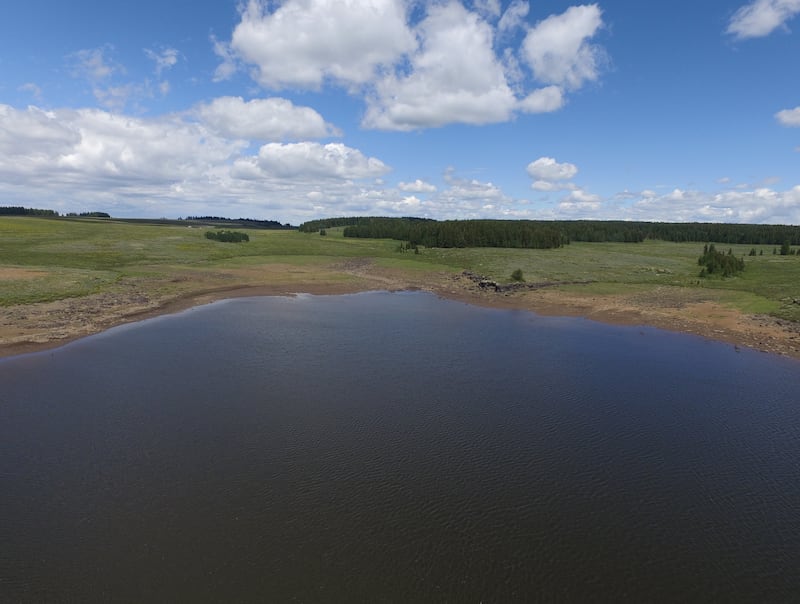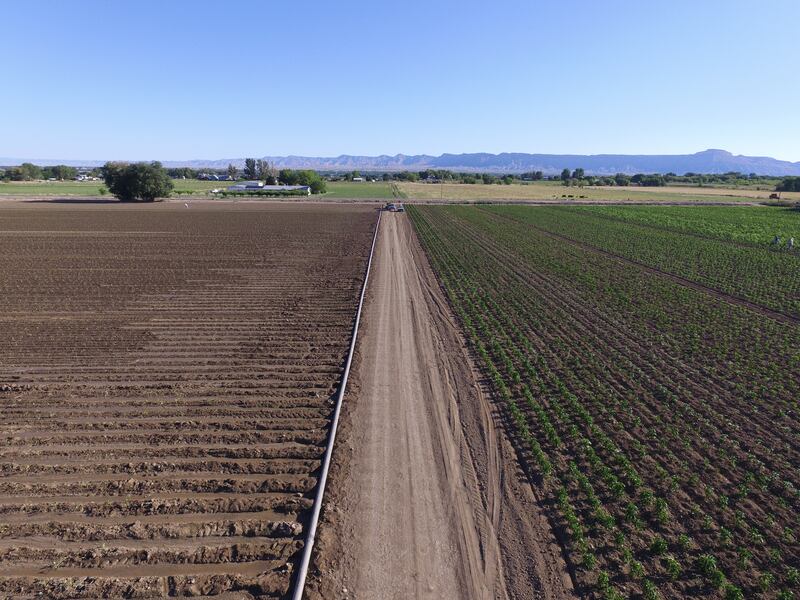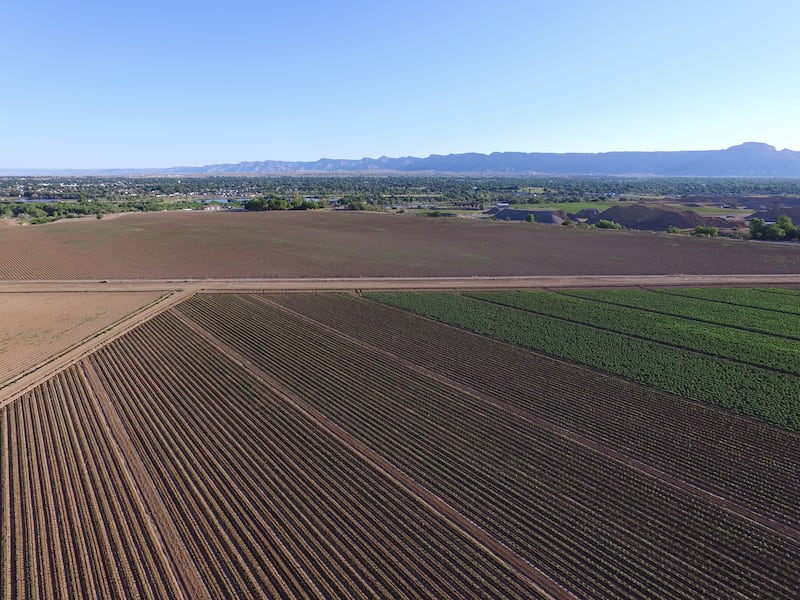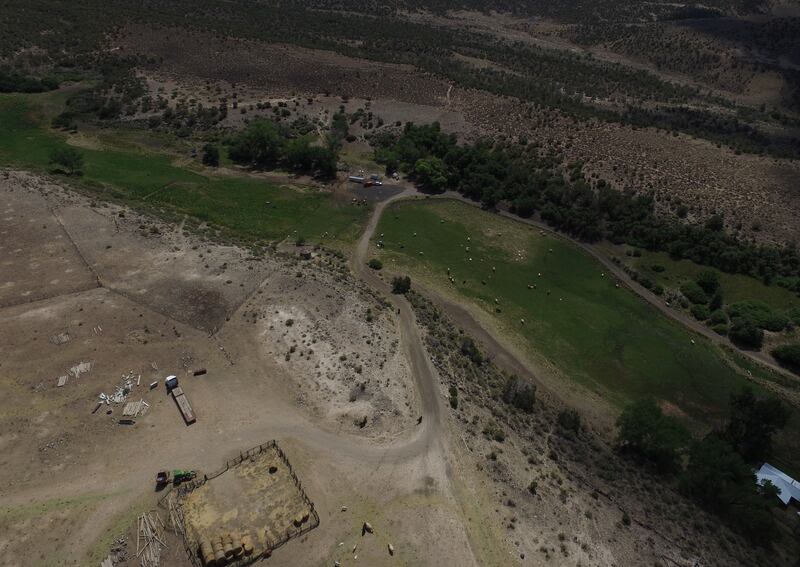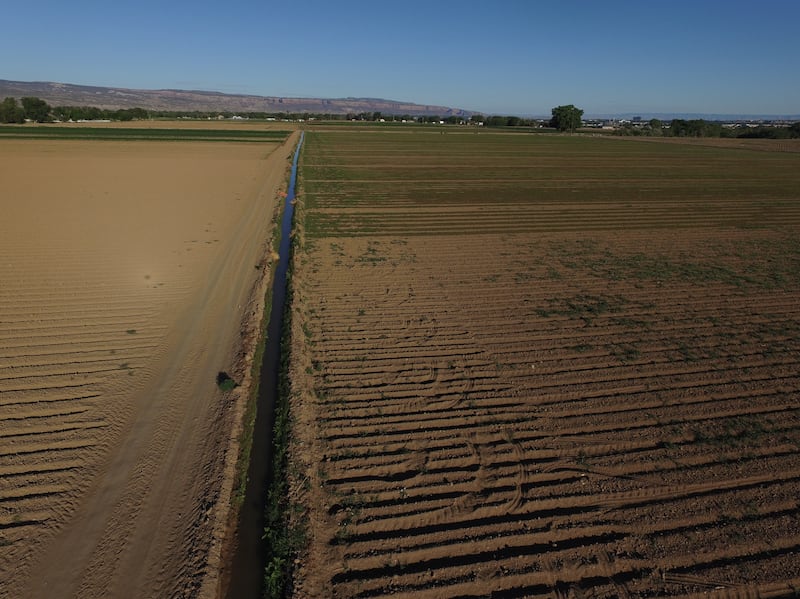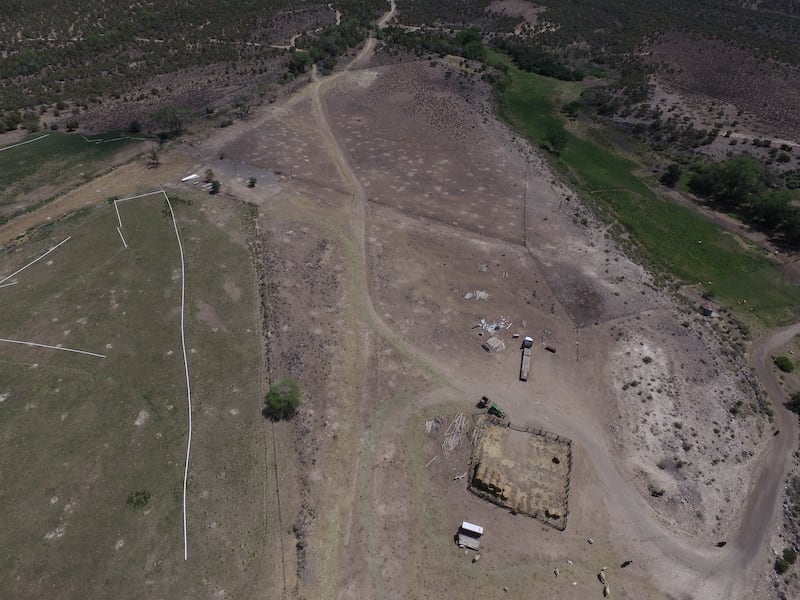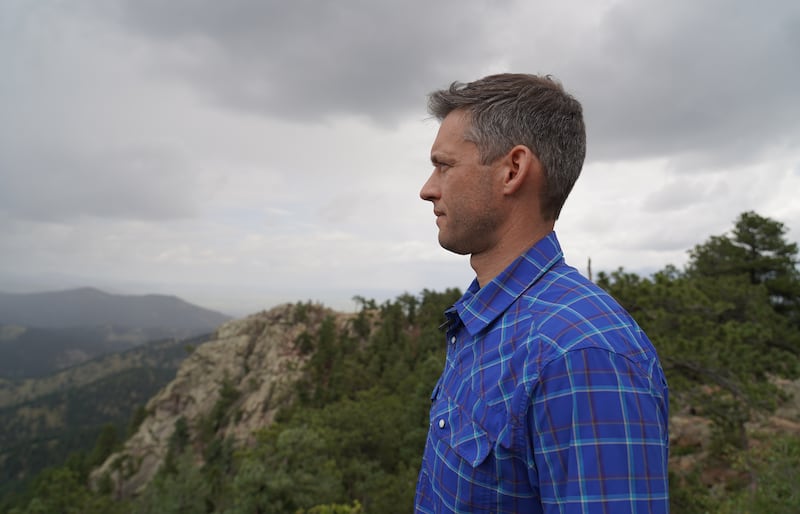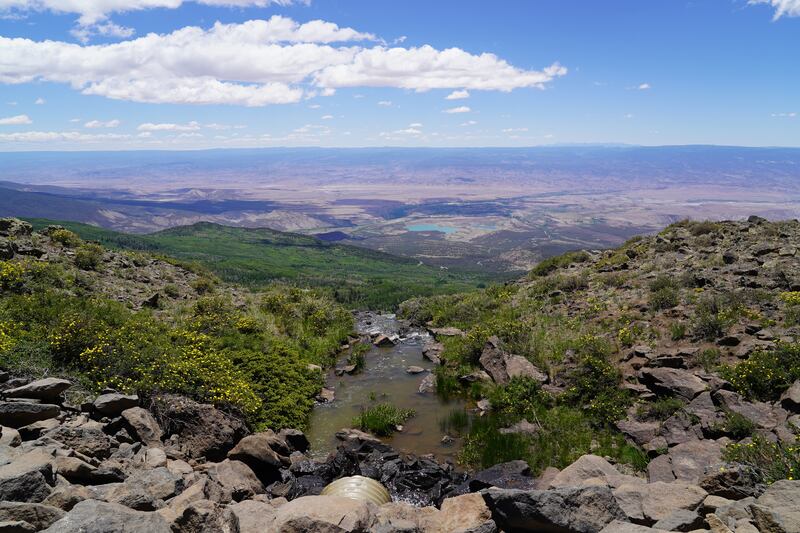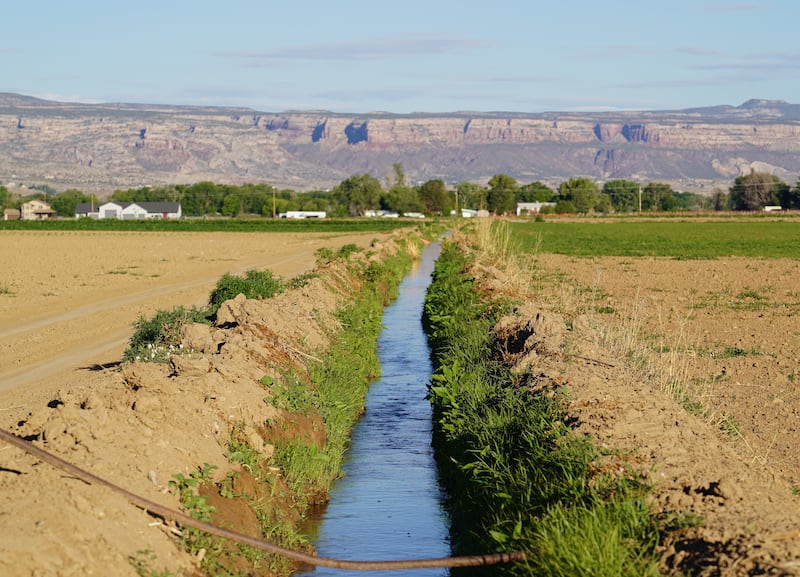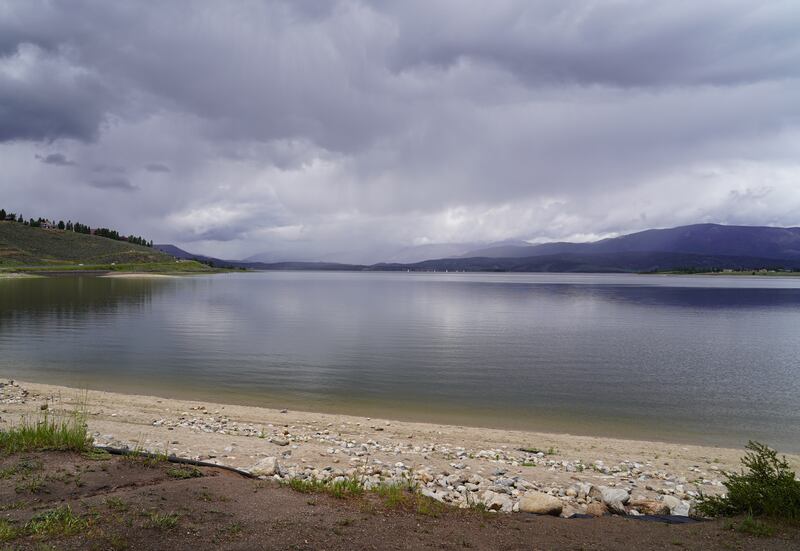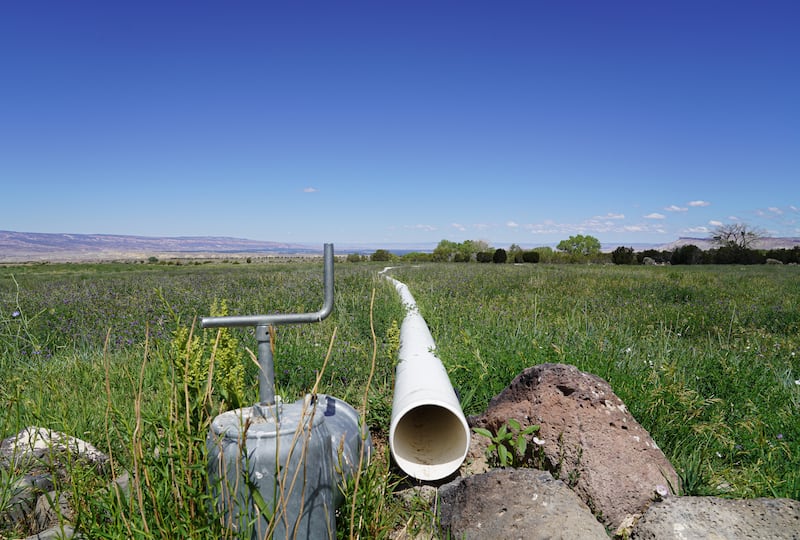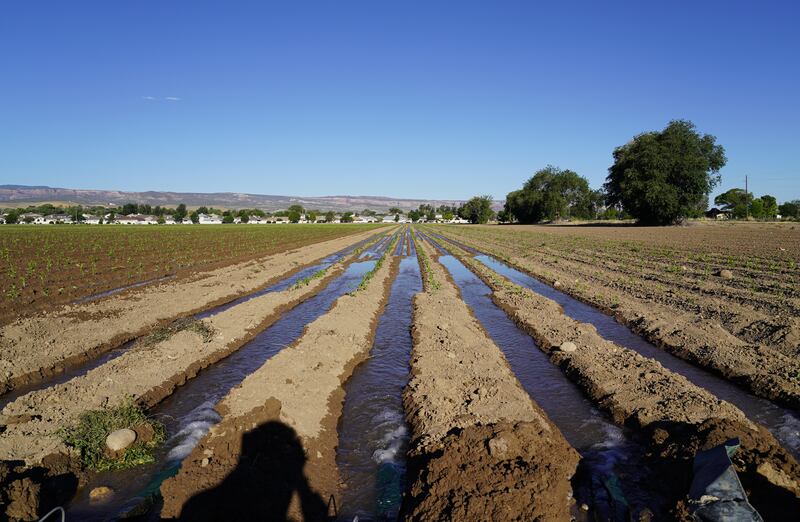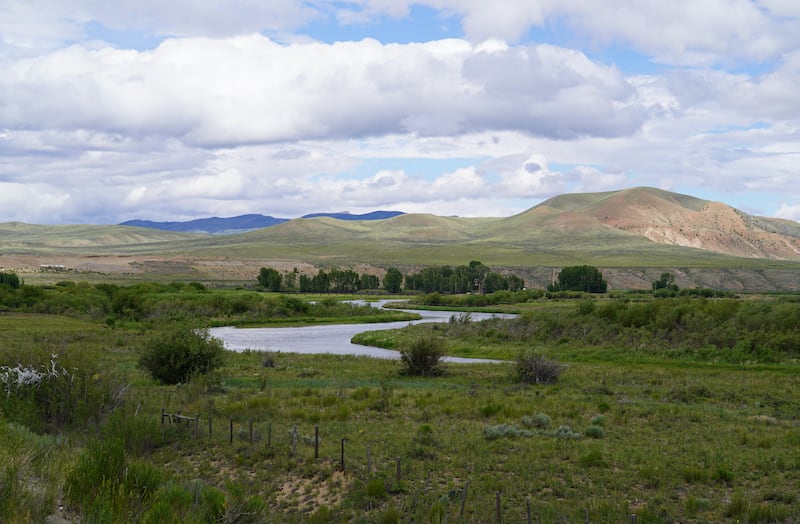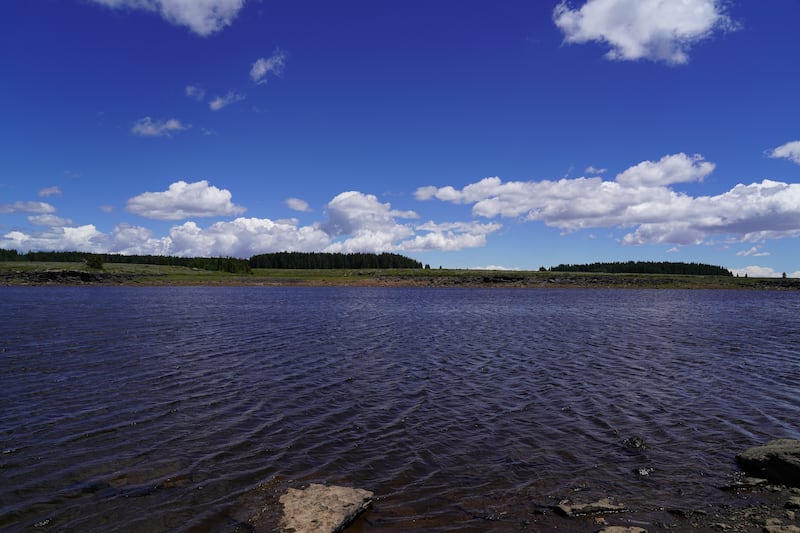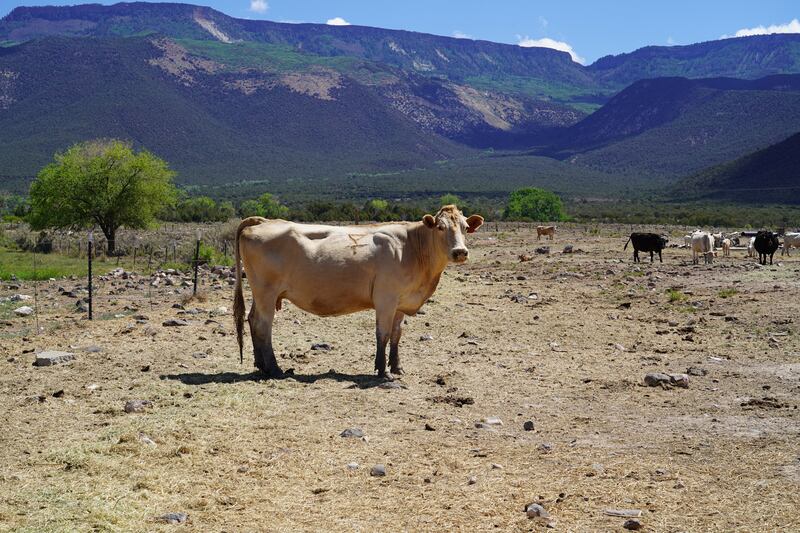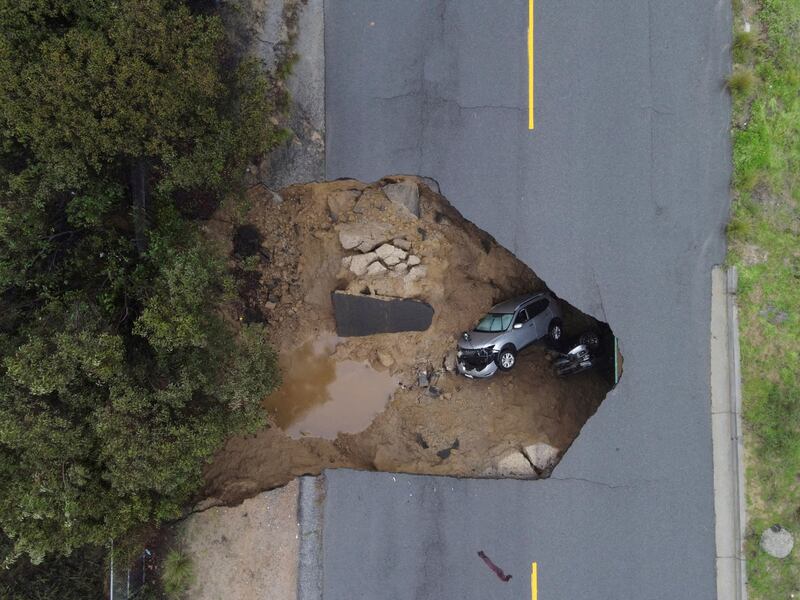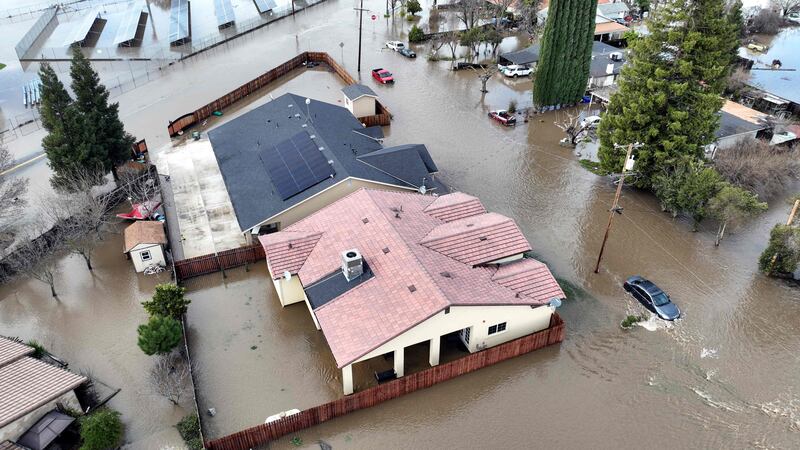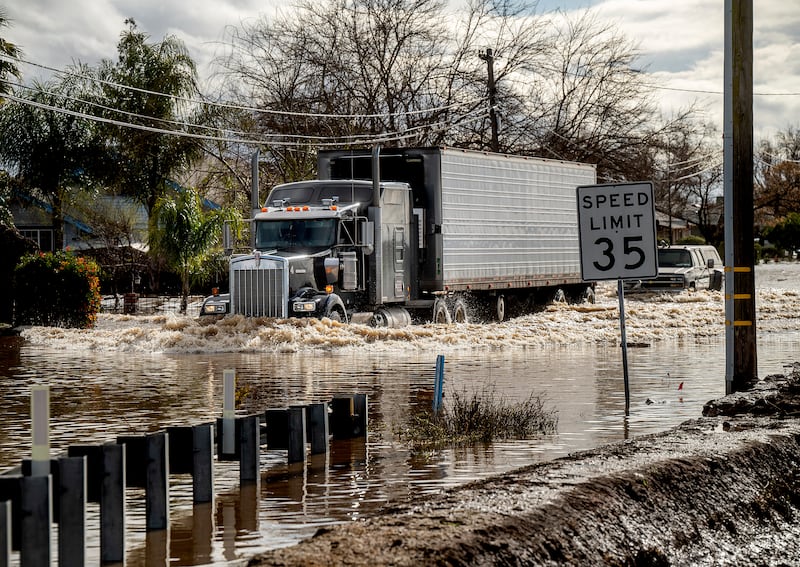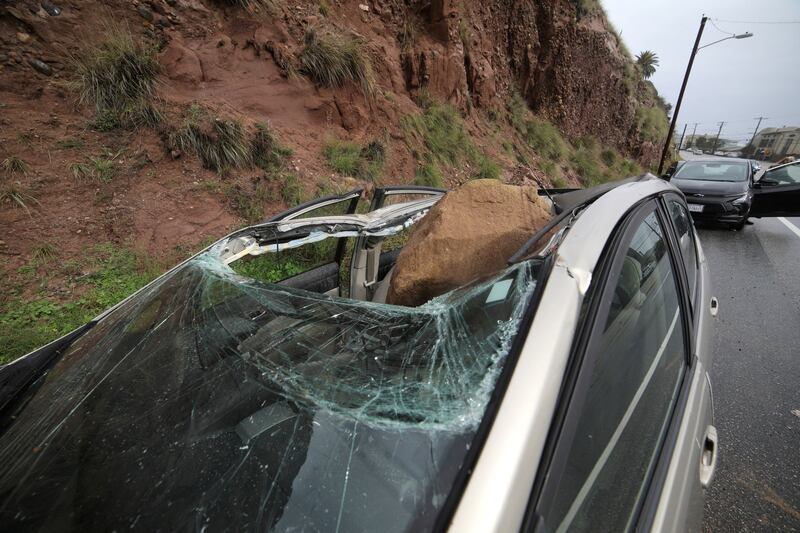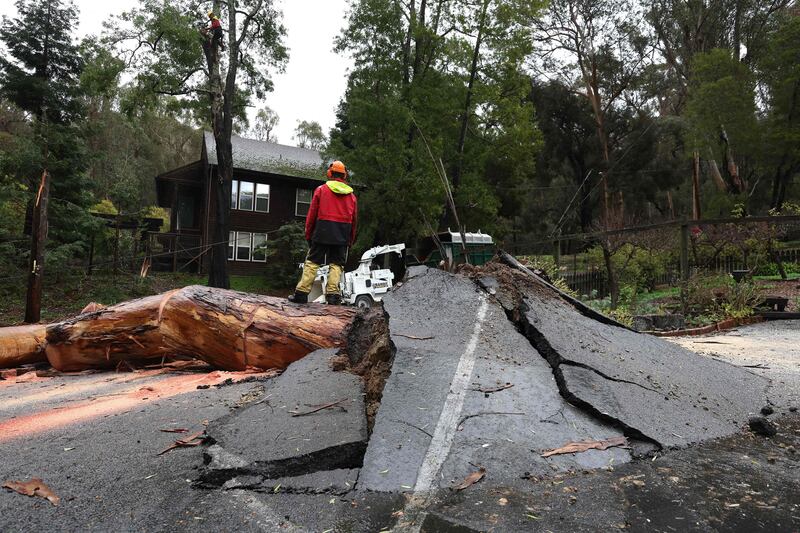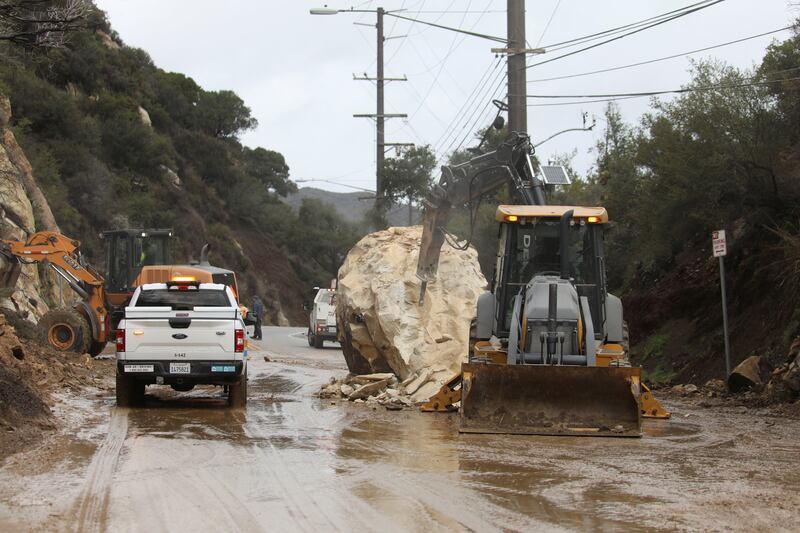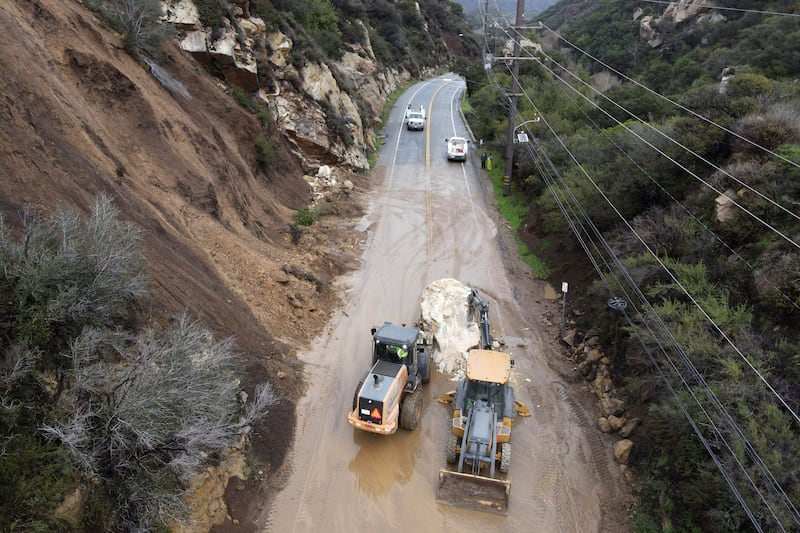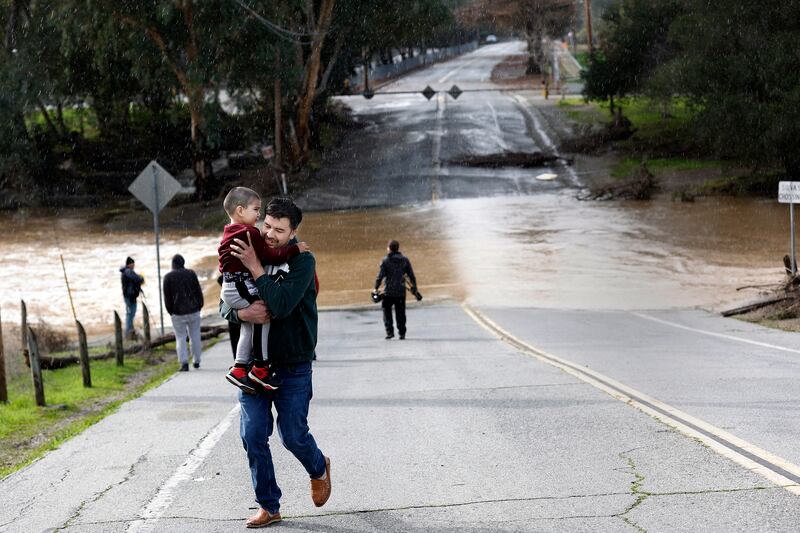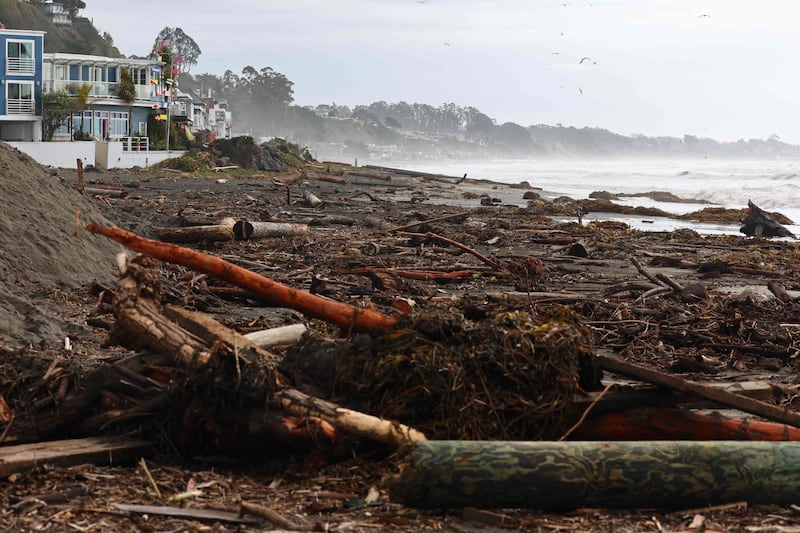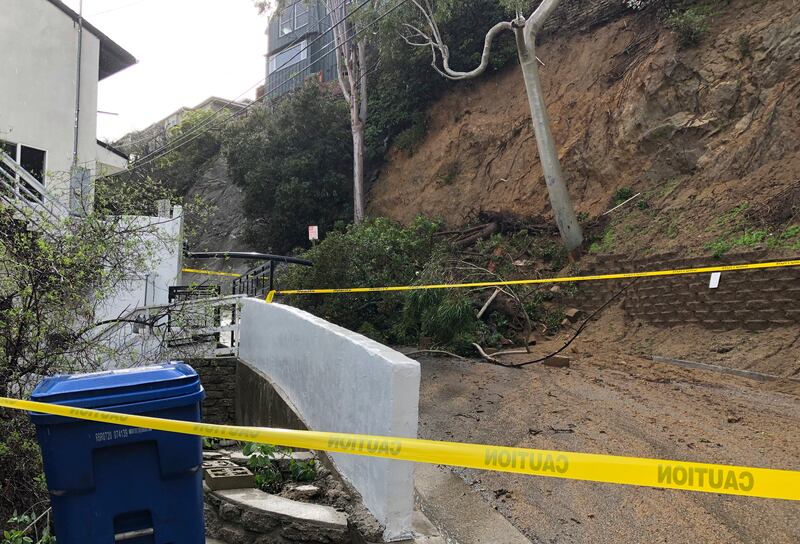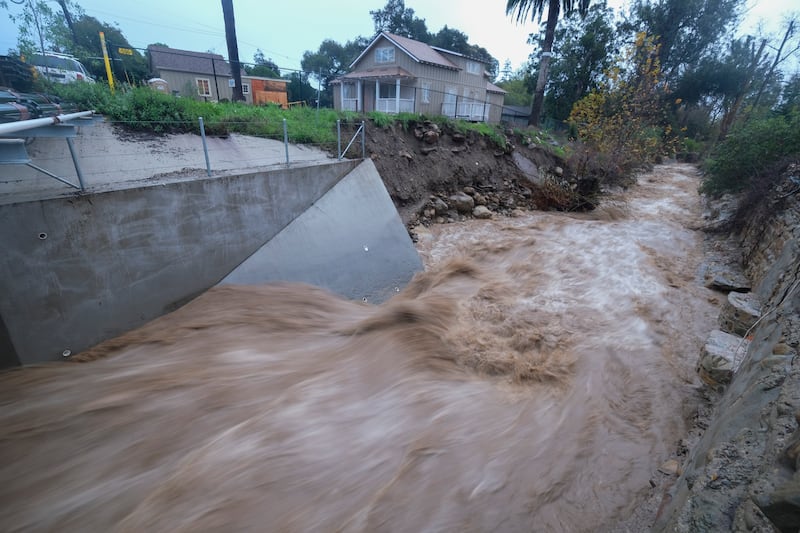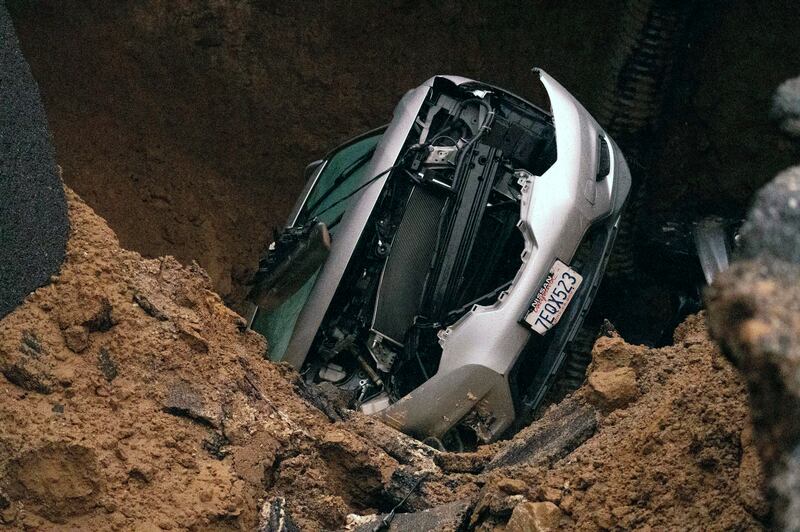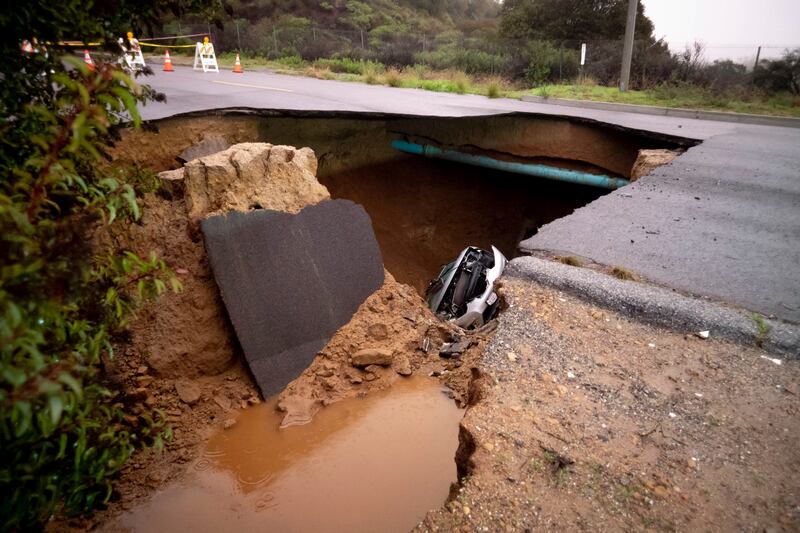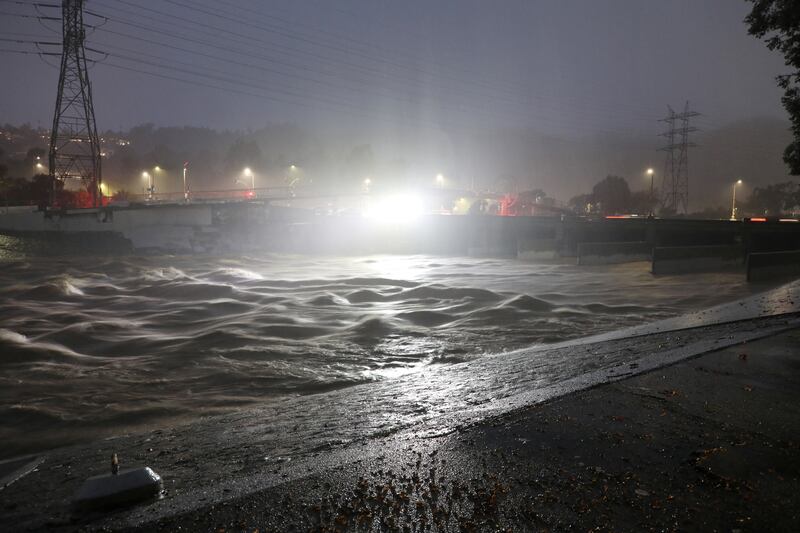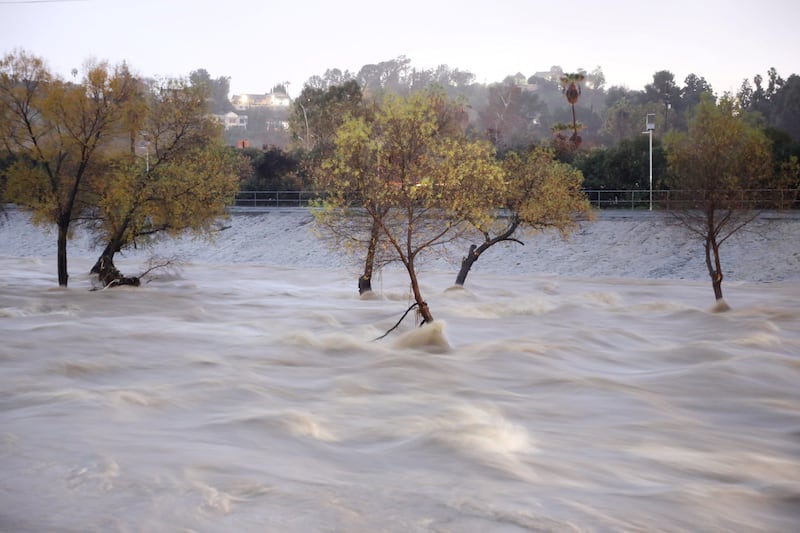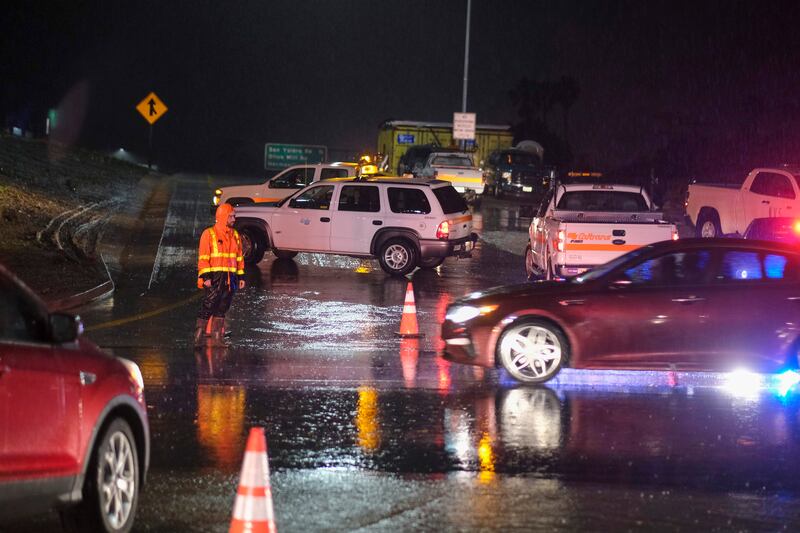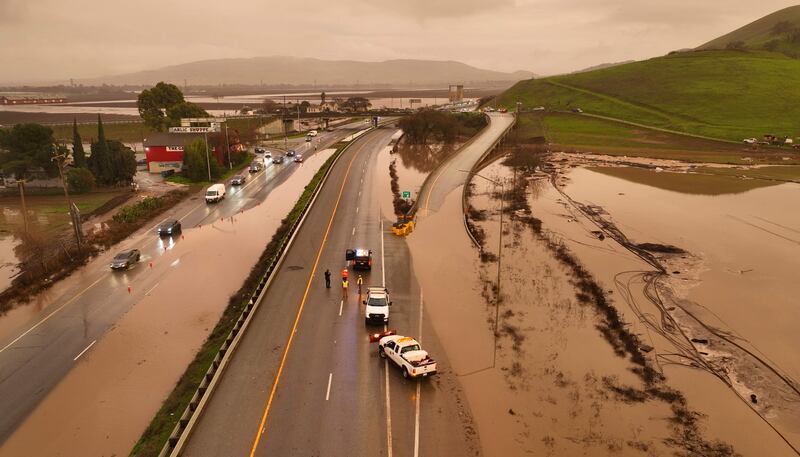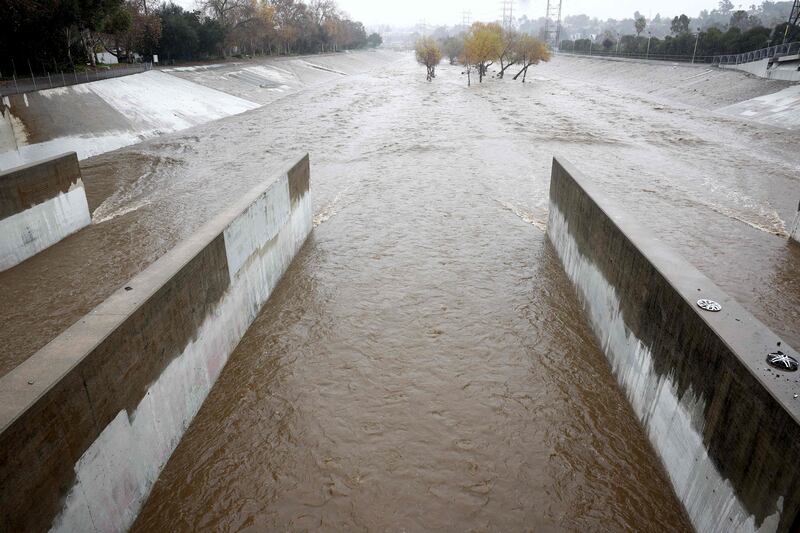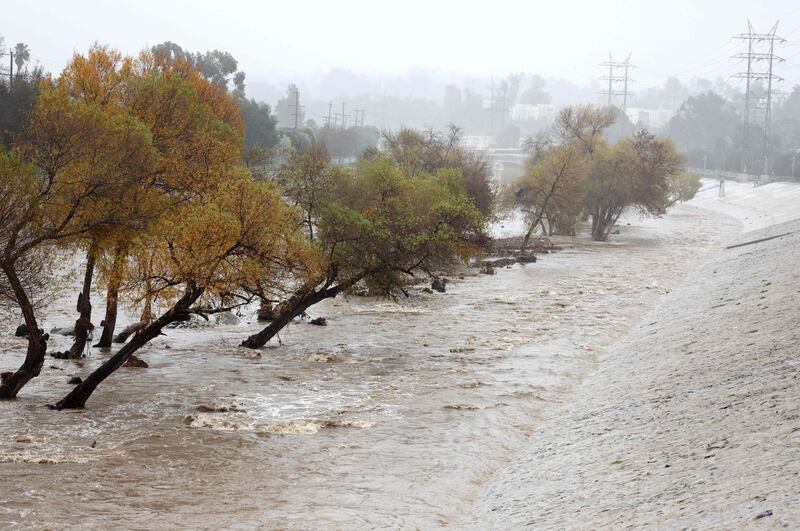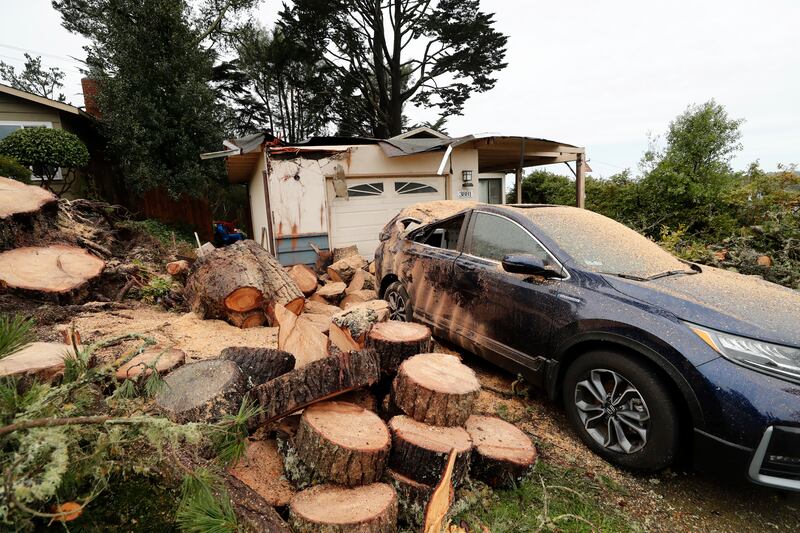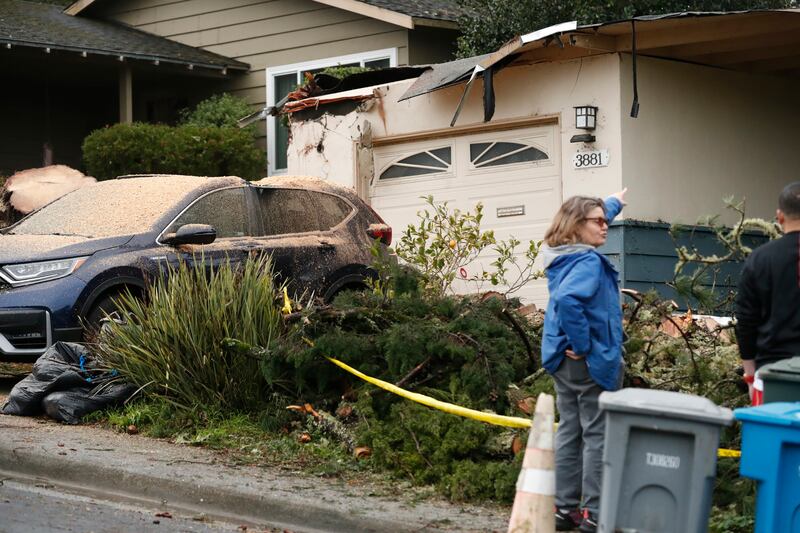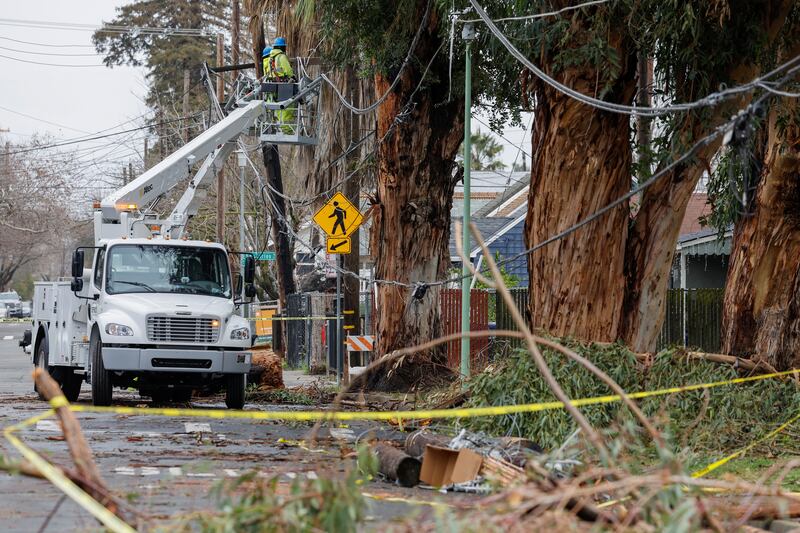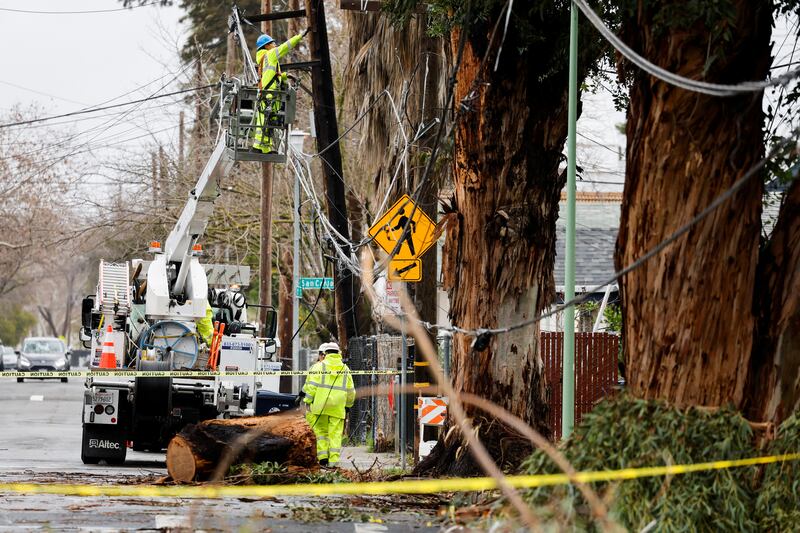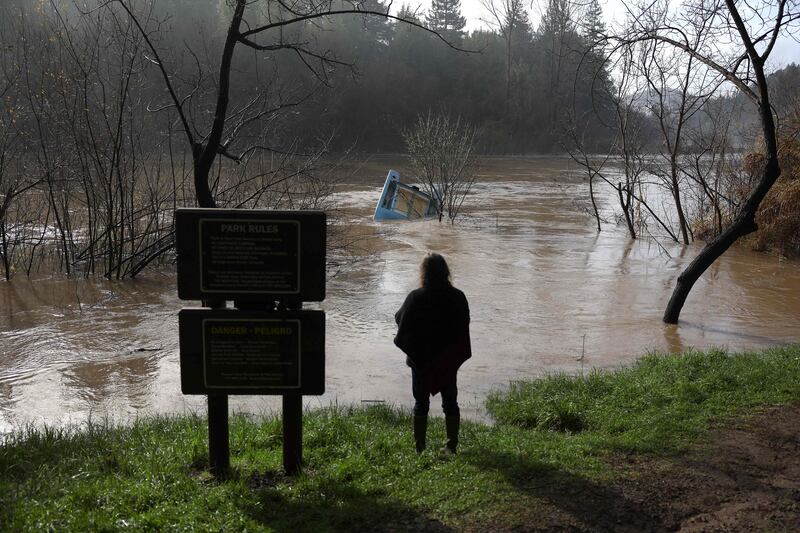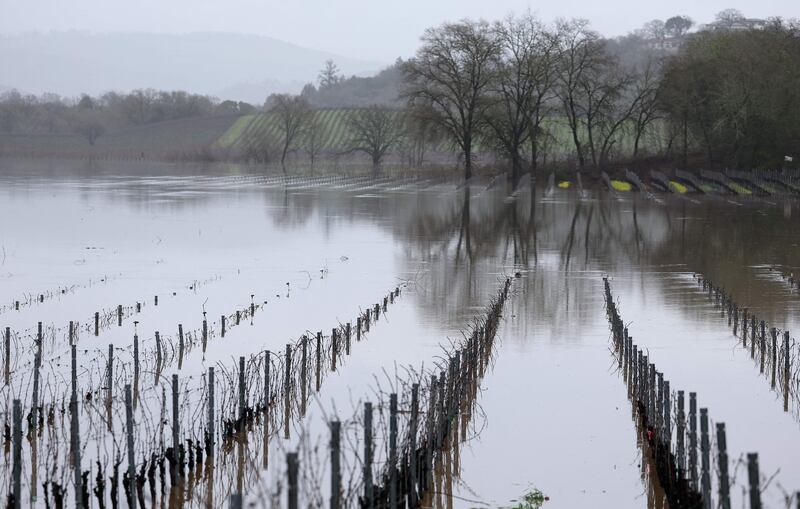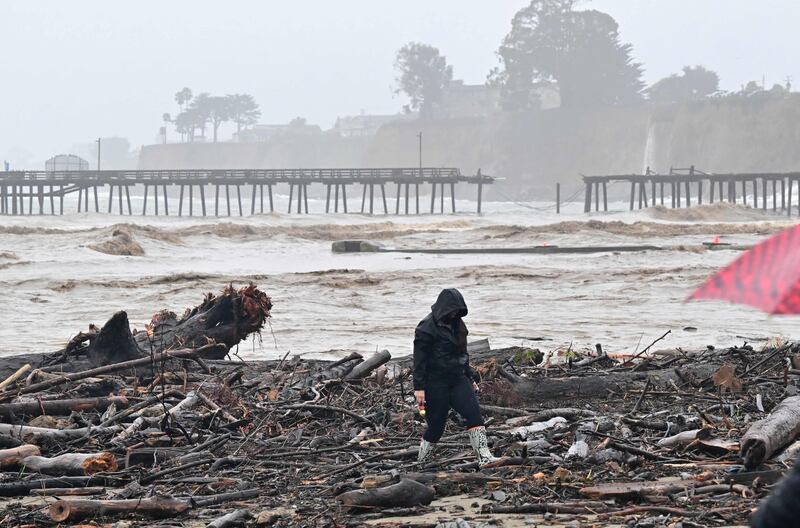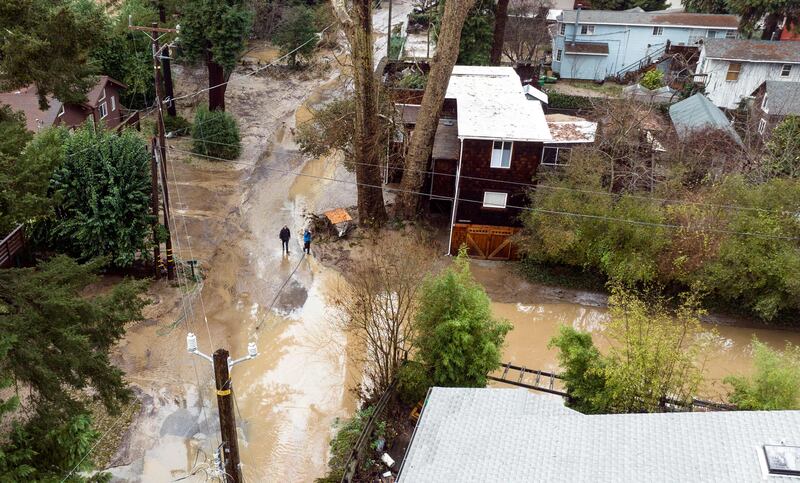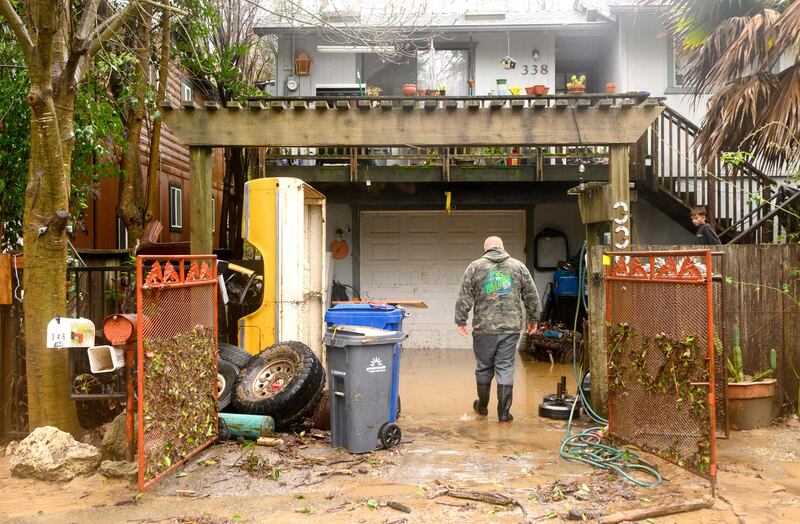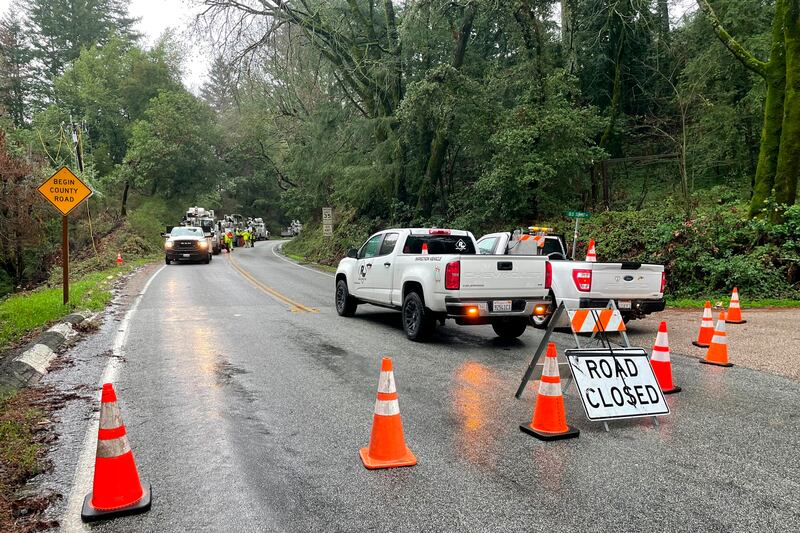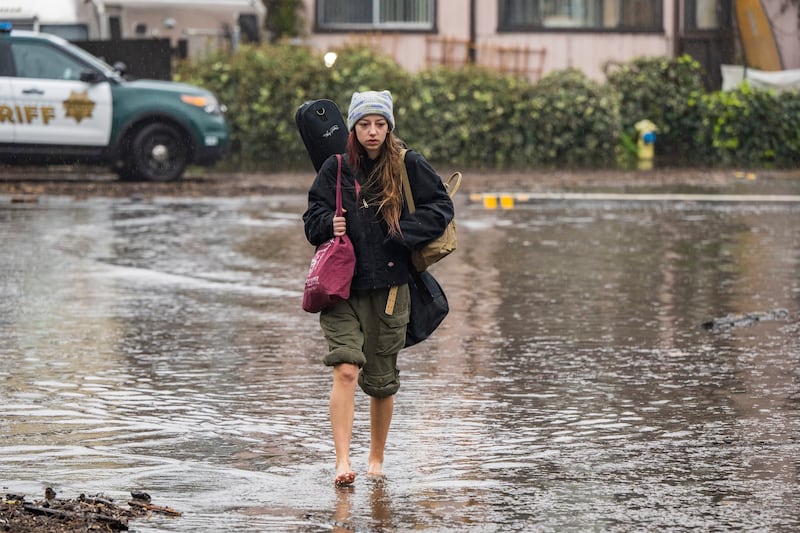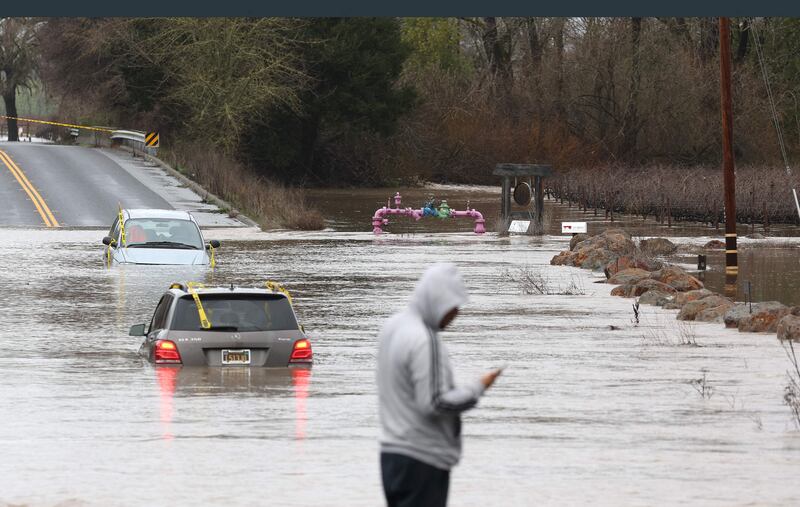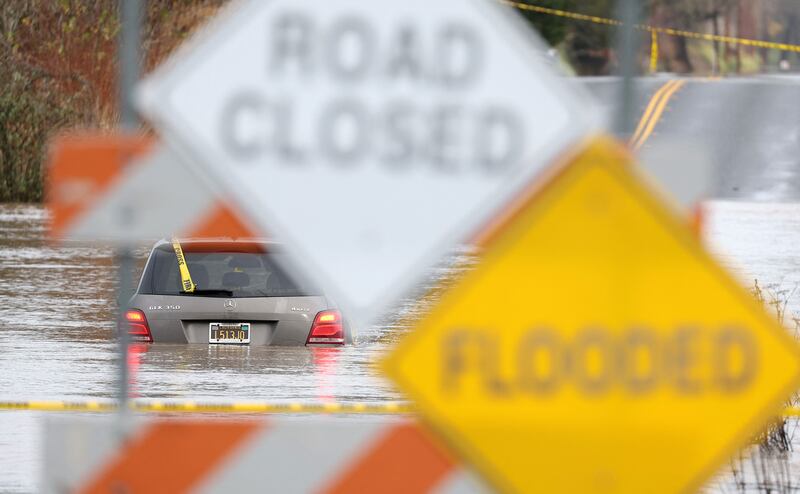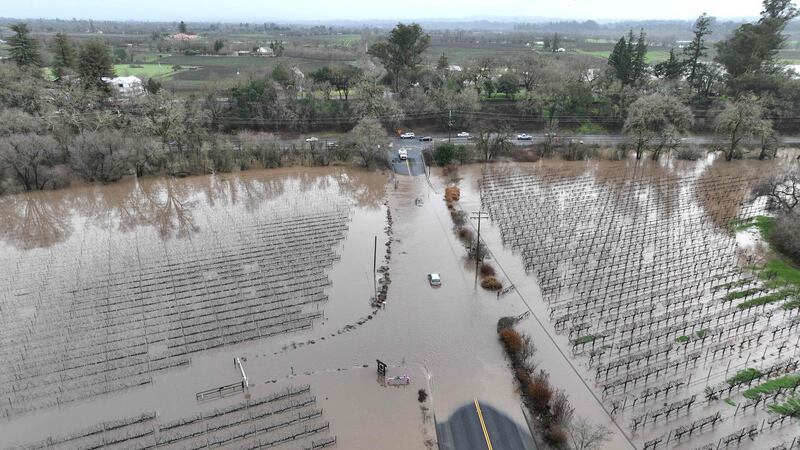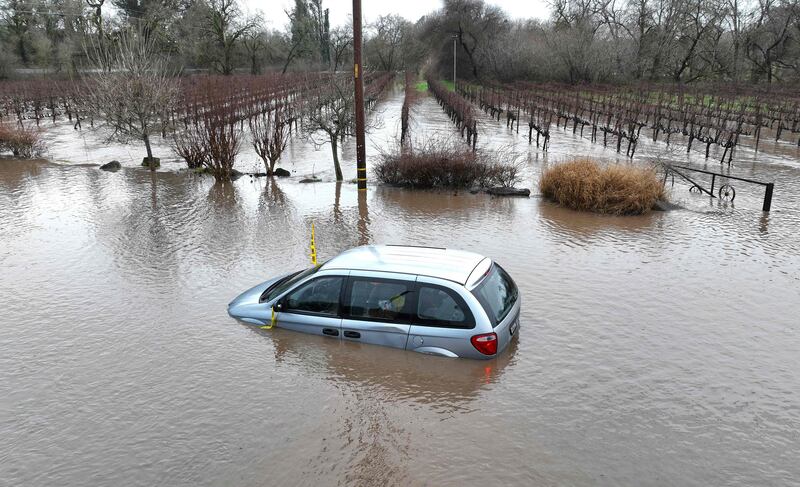The parade of atmospheric rivers that pounded California for three weeks has finally faded, enabling the state to begin lengthy repairs to roads and levees, as the White House announced President Joe Biden planned to visit the state and survey the damage.
The nine consecutive storms that hit the Golden State killed at least 20 people, while tens of thousands remained under evacuation orders as of Monday, Governor Gavin Newsom said in an executive order that reinforced the state's response to storm damage.
“The last of the heavier rain in California is slowly fading,” said meteorologist David Roth of the National Weather Service's Weather Prediction Centre.
Mr Biden will travel to areas of the central coast on Thursday to meet first responders, visit affected towns and “assess what additional federal support is needed”, the White House said.
The President had already issued an emergency declaration on January 8 to free up federal aid and on Saturday authorised disaster assistance for the counties of Merced, Sacramento and Santa Cruz.
Images released by media outlets and on social platforms showed extensive damage across the state. Some of the more shocking displayed the storms' effect on Highway 1, the scenic coastal motorway near Big Sur, which was closed at several points due to mudslides and falling boulders.
Damage estimates from the series of storms already top $1 billion.
A report from the NWS office for the Bay Area said more than 45 centimetres of rain have fallen on San Francisco alone since December 26.
“It's the wettest 22-day period since January 14, 1862,” it said in a tweet.
While damaging, the storms also helped mitigate a historic drought, as much of the state has already received half or more its average annual rainfall.
But with more than two months to go in the rainy season, officials are urging Californians to continue conserving water.
The US Drought Monitor still shows almost the entire state under moderate or severe drought conditions, with reservoir levels still below average for this time of year.
Moreover, the atmospheric rivers largely failed to reach the Colorado River basin, a critical source of southern California's water.
Colorado River drought — in photos
The Colorado's two major reservoirs, Lake Mead and Lake Powell, were at 28.5 per cent and 22.6 per cent of capacity, respectively — well below levels from this time a year ago, according to Water-Data.com.
The ninth consecutive atmospheric river fizzled out on Monday, its remnants soaking the southernmost part of the state, Arizona and northern Mexico, meteorologist Mr Roth said.
Another storm was forecast that could bring moderate rain on Tuesday and Wednesday.
California can otherwise expect dry conditions for the remainder of January, state officials said.
Agencies contributed to this report
